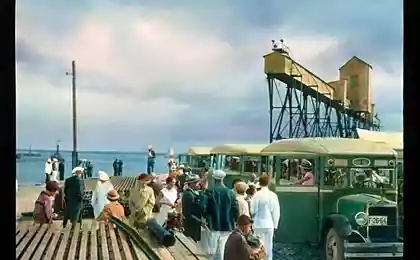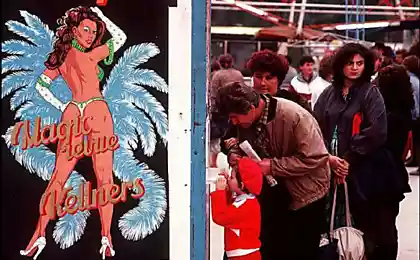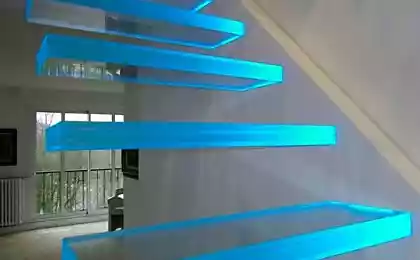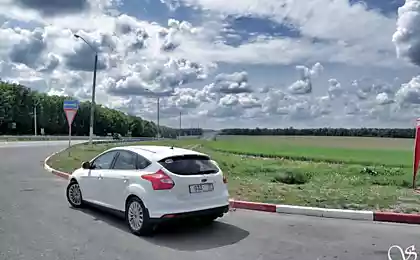1307
The Potemkin Stairs
Visually, it seems that the stairs down to the sea to the south, but in fact it leads towards the north-eastern shore of the city. This effect is achieved due to the features of the Black Sea coastline. In the days of the city and during other major holidays locals use Potemkin Stairs as a platform, which is very convenient to watch the fireworks and firecrackers.
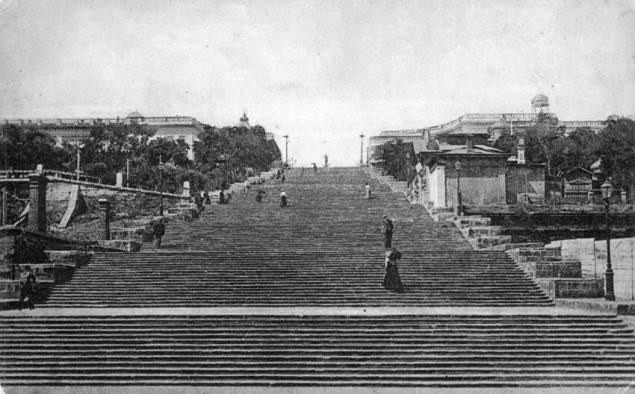
The history of the Odessa attractions is rooted in the XIX century. It was then, in 1825, Abraham Melnikov architects Francesco Boffo and Pottier, it was designed and built a few years later "in the same place, where it was a path" on which he went down to the sea great Pushkin. The design of the stairs at that time was unique. It was a huge wedge, built of local limestone, which was recorded in the vaulted wooden stilts. Maintain and share structure and three longitudinal cross nine arcades, forming massive columns at the intersections. Decorate arcade architectural structure formed by looping cross galleries on the sides of the monumental structure.
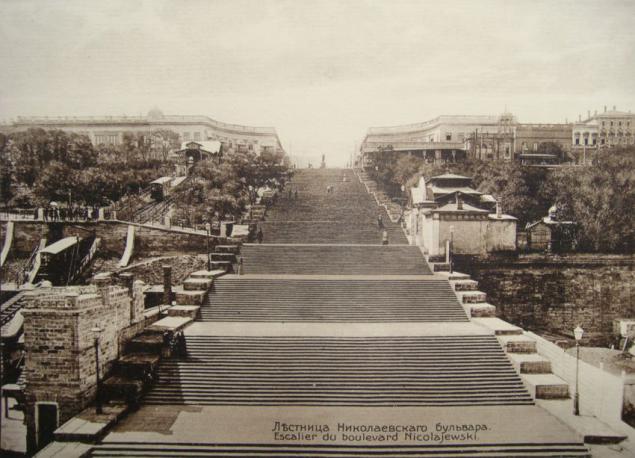
Once it is not called favorite Odessites staircase - and a ladder Nicholas Avenue, and a giant, not without renamed in honor of the great citizens of Odessa - Richelieu and the Vorontsov, and from 1919 to 1941, called the staircase Boulevard Feldman or Primorye, and only then - the Potemkin.

Initially staircase consisted of exactly 200 steps, but in the process of building the Maritime Street, eight steps were covered. The old bayut that they remained buried in the depths of the roadway. The world-famous since the beginning of the XX century Potemkin Stairs become thanks to Sergei Eisenstein, who cast her in his landmark film "Battleship Potemkin." It is said that its name architectural structure obtained thanks to this film.

As time went on, the ladder slowly but surely eroded erosion. In the 30s of the last century it was decided to replace the sandstone pink-gray granite, and cover the area smooth asphalt. This is the appearance of the Potemkin Stairs in the Great Patriotic War was used in Soviet propaganda posters.

Today, the seaside boulevard will connect to the Seaside street not only Potemkin Stairs, and the modern funicular. It was built in 1902 and was renovated in the 70s - replaced tech escalator. In the 90 years the escalator is out of date, and the local authorities decided to build a new cable car. He was put into operation in 2005. Its opening was timed exactly to the 211th anniversary of the founding of the city.
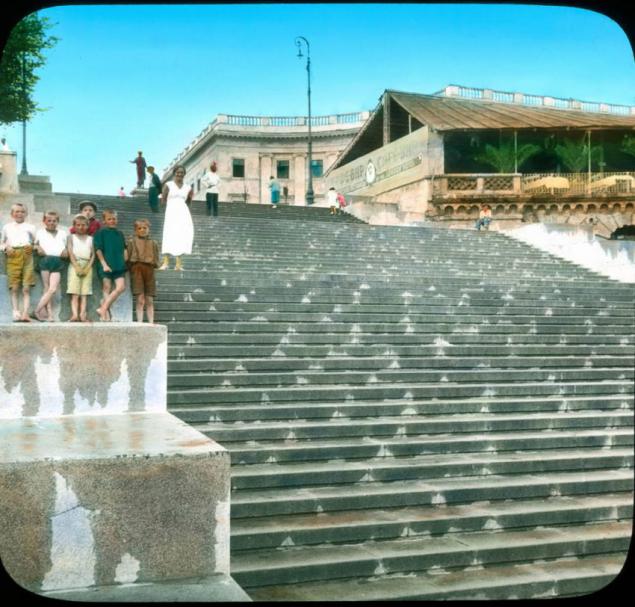
Potemkin Stairs, ranked sixth in the list of the most beautiful stairs of Europe. Walk on it - it is really beautiful and monumental!
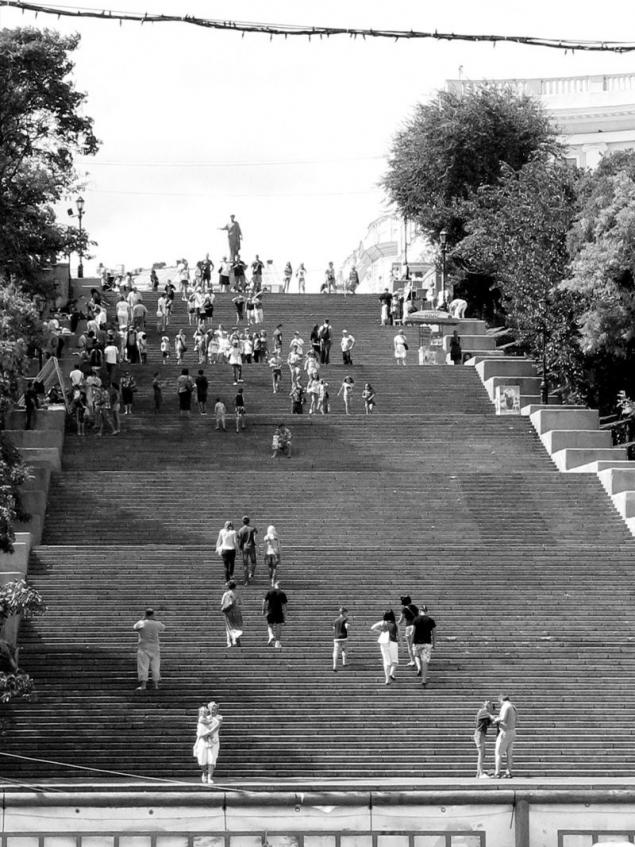
Source: art-on.ru

The history of the Odessa attractions is rooted in the XIX century. It was then, in 1825, Abraham Melnikov architects Francesco Boffo and Pottier, it was designed and built a few years later "in the same place, where it was a path" on which he went down to the sea great Pushkin. The design of the stairs at that time was unique. It was a huge wedge, built of local limestone, which was recorded in the vaulted wooden stilts. Maintain and share structure and three longitudinal cross nine arcades, forming massive columns at the intersections. Decorate arcade architectural structure formed by looping cross galleries on the sides of the monumental structure.

Once it is not called favorite Odessites staircase - and a ladder Nicholas Avenue, and a giant, not without renamed in honor of the great citizens of Odessa - Richelieu and the Vorontsov, and from 1919 to 1941, called the staircase Boulevard Feldman or Primorye, and only then - the Potemkin.

Initially staircase consisted of exactly 200 steps, but in the process of building the Maritime Street, eight steps were covered. The old bayut that they remained buried in the depths of the roadway. The world-famous since the beginning of the XX century Potemkin Stairs become thanks to Sergei Eisenstein, who cast her in his landmark film "Battleship Potemkin." It is said that its name architectural structure obtained thanks to this film.

As time went on, the ladder slowly but surely eroded erosion. In the 30s of the last century it was decided to replace the sandstone pink-gray granite, and cover the area smooth asphalt. This is the appearance of the Potemkin Stairs in the Great Patriotic War was used in Soviet propaganda posters.

Today, the seaside boulevard will connect to the Seaside street not only Potemkin Stairs, and the modern funicular. It was built in 1902 and was renovated in the 70s - replaced tech escalator. In the 90 years the escalator is out of date, and the local authorities decided to build a new cable car. He was put into operation in 2005. Its opening was timed exactly to the 211th anniversary of the founding of the city.

Potemkin Stairs, ranked sixth in the list of the most beautiful stairs of Europe. Walk on it - it is really beautiful and monumental!

Source: art-on.ru


